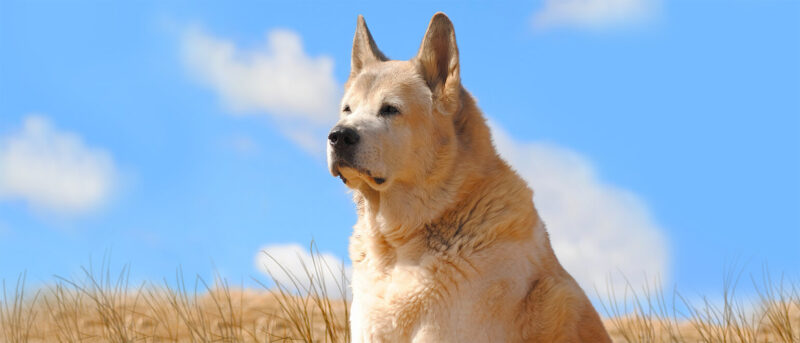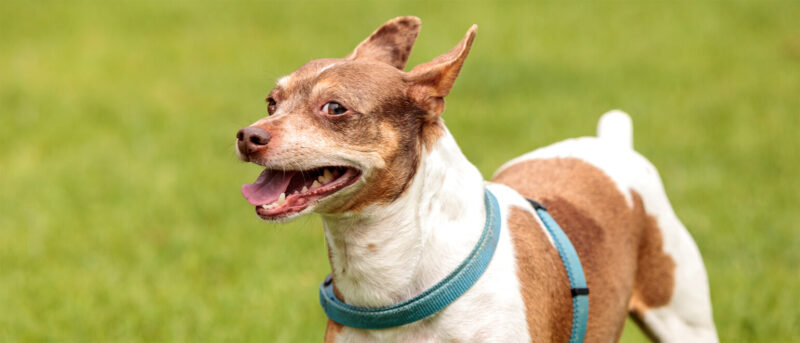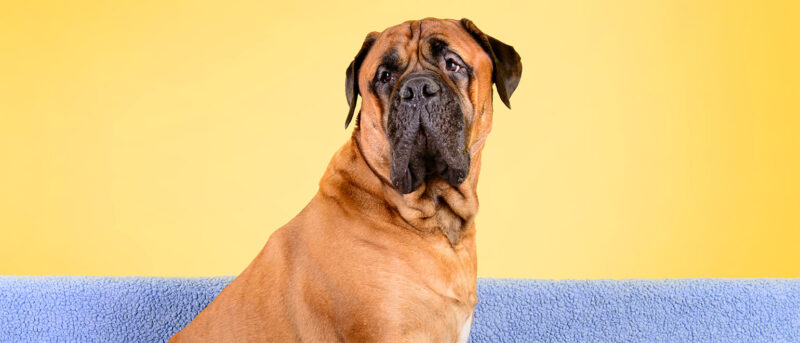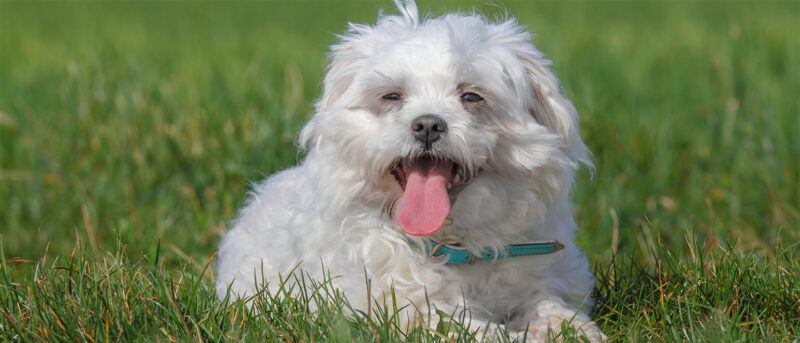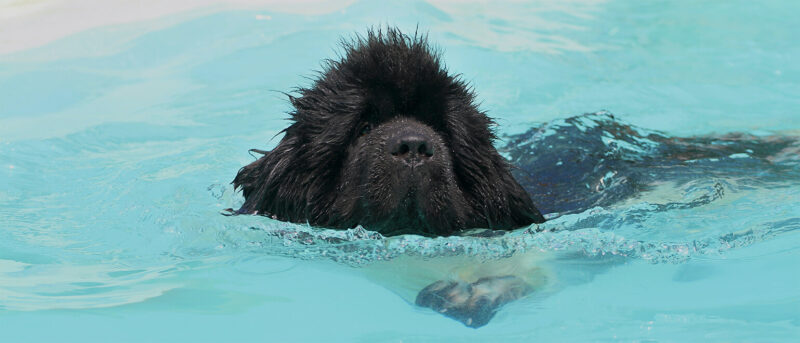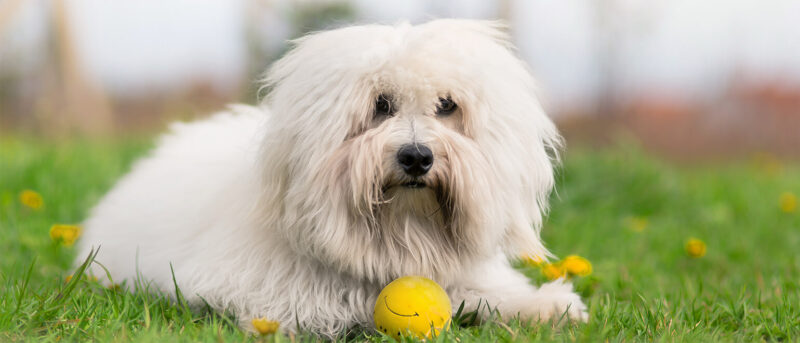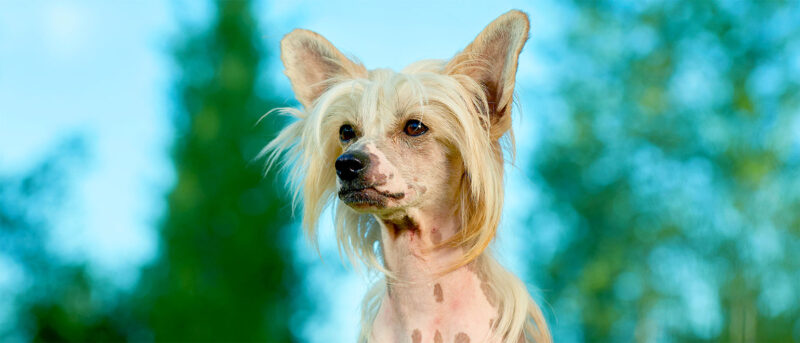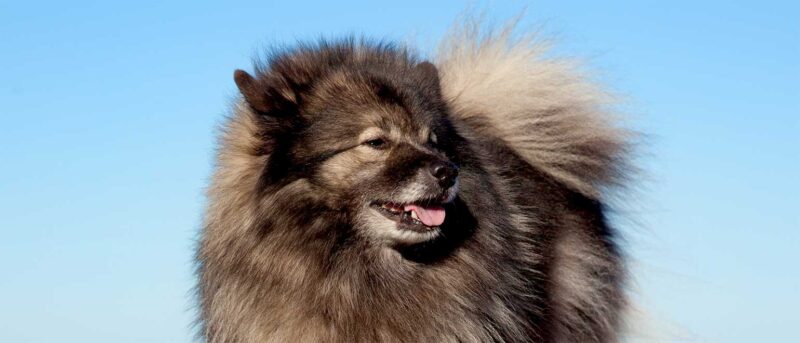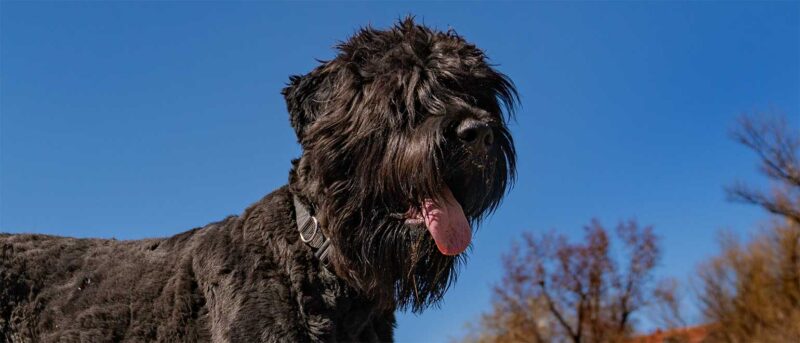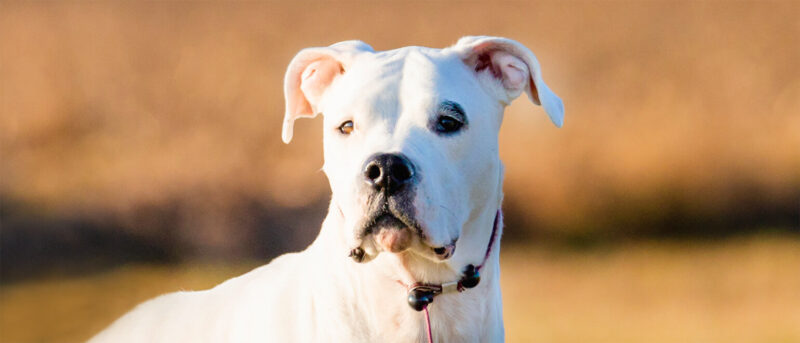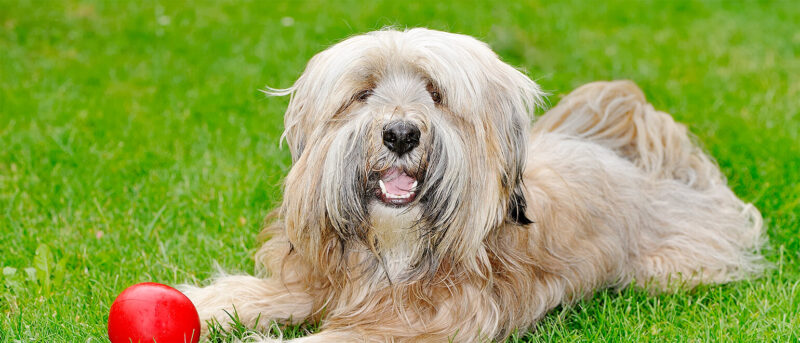English Setter: Breed Guide For the Incredibly Loyal, Kind-Hearted Dog
What does “setting” mean? It’s a unique canine skill embodied by the English Setter where they stand perfectly motionless after silently detecting game by scent, communicating the location of fowl to their human companion. This helpful skill is essential when hunting for birds but the English Setter is much more than its hunting origins. Today, […]
What does “setting” mean? It’s a unique canine skill embodied by the English Setter where they stand perfectly motionless after silently detecting game by scent, communicating the location of fowl to their human companion. This helpful skill is essential when hunting for birds but the English Setter is much more than its hunting origins. Today, this lovable breed has transitioned into a traditional family companion role.
English Setters exhibit remarkable loyalty and possess generous hearts. Due to their hunting lineage, they are full of energy and require a lot of space for exercise. If you’re seeking a dog that can accompany you on hikes and loves to cuddle, the English Setter is the dog for you! In this article, we will discuss their physical attributes, temperament, dog breed history, and more.
English Setter Characteristics (Physical)
The English Setter is a medium-sized member of the sporting dog breed, known for its elegance, strength, agility, and grace. The overall balanced and well-proportioned body of the Setter supports their hunting abilities.
The English Setter’s fluffy head is long, lean, and proportionate to its body. Its muzzle is elongated and squarely shaped, with a black or dark brown nose. With typically dark brown eyes, this breed displays an intelligent and alert gaze. The Setter’s ears are set back and low, lying close to the head. The ears of this dog are of moderate length, softly rounded and the ends, and covered with the Setter’s signature silky hair.
The English Setter’s neck and general body structure are elongated, muscular, and sleek. Its fore-chest is robust and deep, yet carefully balanced to ensure free movement of the forelegs. To aid in their agility, their muscular legs accommodate a wide range of motion.
English Setter Dog Breed Size
The English Setter is classified as a medium-sized breed, with males typically measuring between 25 to 27 inches in height, and female dogs ranging from 23 to 25 inches. Weight can vary within the breed, with the male Setter typically weighing between 65 to 80 pounds, and females weighing in the range of 45 to 55 pounds.
English Setter Personality
Well-known for its kind and gentle demeanor, the English Setter loves to be active and play outside when they’re not cuddling on the couch with their favorite human. English Setters do have a tendency to bark, especially when they see strangers. Once Setters know that the person in question is not a threat, they will quickly show their softer side.
Since English Setters have a strong desire to please their owners, they are fairly easy to train. As with any dog, training should start when they are young so they can learn appropriate behaviors before they become set in their ways.
Developed to be natural hunters, Setters are curious, intelligent, and love to play. These pups love exploring the outdoors, going on walks, hiking, and accompanying you on any other outdoor activity.
While their innate hunting skills aid the Setter’s ability to work with people, they can also be more independent. It’s not uncommon for English Setters to wander off the path only to return when you’re not looking. As long as you commit to training them well and consistently, this breed makes for an ideal hunting partner.
Consistent positive reinforcement is needed when training an English Setter. Negative approaches or harsh treatment can lead to the development of stubborn behavior for your Setters. Opt for patience, gentleness, and a firm but calm demeanor to establish authority. Keep training sessions brief to avoid overwhelming your pup, and always conclude on a positive note to reinforce good behavior.
English Setter Dog Breed Exercise
The English Setter thrives when it receives plenty of exercise as it is an extremely active breed. Activities such as long walks, brisk runs, or energetic play sessions in a large yard are ideal. Apartment living may not be suitable for this breed due to their activity needs. They particularly enjoy games that involve running, such as chasing you while you ride a bike or engaging in bird-hunting simulations.
Since the bones and joints of English Setters don’t reach full maturity until they are around two years of age, it’s best to avoid overexerting them to prevent potential injuries or long-term bone issues. However, once matured, English Setters exhibit remarkable swiftness and strength. Ensuring a moderately active lifestyle with ample exercise and outdoor time will keep your English Setter happy and healthy.
English Setter Training
English Setters are good-natured dogs with exceptional intelligence, making them wonderful companions who delight in pleasing their owners. These dogs can be sensitive and may take reprimands to heart. Therefore, when training English Setter puppies, use positive reinforcement and steer clear of harsh punishments.
English Setters make adorable little thieves when they are puppies. These curious critters love to snatch up your valuables in good fun. Be sure to keep anything you don’t want your puppy to grab far beyond their reach and train them to be respectful of your space and belongings.
English Setters often bark at strangers upon their arrival or at unfamiliar noises outside. However, once they sense that these new people are no threat, they typically relax and return to their friendly nature. To prevent excessive barking, it’s essential to train your Setter as a puppy when it’s appropriate to bark and when it’s not.
English Setter Dog Breed History
The English Setter breed has a rich history dating back approximately 400 years ago. It is believed to have originated in England from crossbreeding a variety of various hunting dogs, including pointers and spaniels. The modern English Setter as we recognize it today was refined in the 19th century by enthusiasts like Edward Laverack and R.L. Purcell Llewellin.
A major turning point for this breed was in 1825 when Laverack purchased two dogs that would become the foundation of the English Setter breed. Laverack was breeding dogs that were gentle and treasured human connection. It is speculated that we added the Pointer and Irish Setter to the lines to develop their personalities.
Llewellin’s approach focused on developing a breed that would do well in the field. Llewellin started with dogs similar to Laverack but crossbred them with Gordon Setters and other skilled dogs to improve their agility and scenting abilities.
In the late 1800s, Laverack and Llewellin’s English Setters came to America. While Llewellin’s line became the root foundation for field dogs, Laverack’s line became used for the dog show circuit.
English Setters today have a distinctive appearance characterized by a sculpted head, graceful yet athletic frame, and long, feathery tails. The field dog line tends to be smaller than the show dog line, as the hunting variety needs to be more inconspicuous when they are out hunting.
A rare breed, the English Setters are currently ranked by the American Kennel Club as the 98th most registered breed. If you plan on adopting one of these phenomenal breeds, be prepared to spend time on a waiting list.
Common Health Problems Found in the English Setter Dog
Like any dog, English Setters can be prone to certain health issues. While not every dog will experience these conditions, it’s important to be aware of them so you can quickly recognize the signs of a potential health issue. Here are some common health problems that English Setters might experience.
Hip and Elbow Dysplasia
Hip and elbow dysplasia are skeletal conditions that can affect certain dog breeds, causing mobility issues and significant discomfort. In hip dysplasia, the ball and socket of the hip joint don’t develop properly, resulting in bone grinding instead of smooth, fluid motion. To support optimal joint health, products like Penelope’s Bloom’s Joint + Mobility Soft Chews can be added to your Setter’s diet to maintain your dog’s joint function and overall well-being.
While dysplasia is more common in larger breeds, it can still affect medium-sized dogs like the English Setter. Generally, dysplasia is a genetic condition and it ranges in severity across different breeds. In severe cases, surgery may be necessary to address hip and elbow dysplasia and restore your dog’s mobility to a more fluid and comfortable level, enabling them to live a better quality of life.
Hypothyroidism
Hypothyroidism is a condition that occurs when a dog’s thyroid is underactive. When the thyroid is underactive, the body’s metabolism slows down. This can lead to symptoms such as weight gain, increased hunger, excessive shedding, lethargy, and elevated blood cholesterol levels.
Hypothyroidism is usually passed on genetically. If you notice any of the above-mentioned symptoms, take your Setter to the vet for evaluation. Your vet can prescribe helpful thyroid medication that may help treat your dog’s condition.
Allergies
Just like humans, dogs can also experience allergies. Allergic reactions can be triggered in English Setters due to changes in the environments, the weather, and changes in their food. The first step in determining if your dog is experiencing an allergic reaction is to see if there have been any notable changes in their routine. Simple changes in diet or medication can help control a dog’s allergies. Pet CBD balm is a great way to treat the skin irritation that often accompanies canine allergies. Make sure to check with your vet before making any monumental changes to your dog’s routine.
Congenital Deafness
While relatively uncommon in English Setters, it’s not unheard of for dogs to be born deaf in one or both ears. Despite the inconveniences that come with this condition, deaf dogs can still lead fulfilling lives. They may experience difficulties hearing their name or their surrounding environment, but with patience and understanding, your dog can still thrive and enjoy a happy and healthy life.
How to Care for an English Setter
The perfect living situation for an English Setter is a home with a spacious fenced-in yard. With their abundant energy, English Setters thrive with time spent outdoors and benefit from being able to safely run off-leash. A fenced yard is particularly important to prevent your Setter from chasing after birds or other distractions. That being said, English Setters don’t mind spending time on the couch especially when with their favorite person.
Early Years
While English Setters require plenty of exercise, it’s best to start slowly with physical activity and wait until they are about two years old to let them have more extensive exercise. This is because their bones don’t fully develop until they are 24 months old. Before reaching this age, it’s important to avoid letting your puppy engage in activities that could strain their developing bones, such as running or jumping on hard surfaces, jumping off furniture, or running on slippery floors where they could slide into a wall.
Before the age of two, the best way to keep your Setter in shape is with moderate walks and playtime with toys. As they age, you can increase the pace and length of your walks and add training and obediences classes to their schedule.
Maturity
As adult dogs, English Setters love to spend time outside, going on walks, hiking, running next to you as you bike, and of course, hunting. Although English Setters have incredible amounts of energy, they also love to kick back and relax after a day of exercise. You can help make their rest time more therapeutic with the addition of CBD products.
The key to happiness for an English Setter is spending time with their owner. No matter what activity you participate in, they love to be your companion. Your Setter may experience separation anxiety if you don’t train them properly. Make sure you gradually get them used to being on their own and create a comfortable and safe environment for your Setter to enjoy while you are out of the house.
Nutrition and Feeding for an English Setter
To keep up with the fast metabolism of your English Setter puppy, you should feed them small amounts of food three times a day. Once the dog is 12 months old, you can shift to feeding your dog twice a day with high-quality food.
Determining the appropriate amount of food to feed your dog is influenced by various factors such as their size, age, build, metabolism, and activity level. Dogs with higher activity levels may require more calories to fuel their body. It’s important to use your best judgment and monitor your English Setter’s weight and adjust their meal portions accordingly.
Despite their athletic natures, English Setters can be prone to obesity due to overeating. The best way to prevent this from happening is to monitor your English Setter’s diet and weight. It is also critical not to feed your Setter table scraps or too many high-calorie treats. Dogs can begin to prefer human food and neglect their healthier dog food.
Coat Color And Grooming
The English Setter boasts a smooth, elegant coat characterized by its flat texture, devoid of curls or wooliness. The English Setter’s coat also features feathering on various parts of the body, including the ears, chest, belly, underside of the thighs, backs of legs, and tail. Their lightweight furs allow them to reach swift speeds and experience a full range of motion.
The English Setter’s coat comes in a range of colors, including blue Belton, orange or lemon Belton, blue Belton and tan, and liver Belton. The term “Belton” refers to coats featuring spots of various colors, creating a distinctive appearance. Interestingly, Belton was not only a descriptor for these coats but also the name of the village where Edward Laverack, a key figure in the breed’s history, went hunting with his dogs, further adding to the breed’s rich heritage.
Grooming Specifics
The best way to keep an English Setter’s coat sleek and healthy is to regularly groom them. Ideally, brush your dog three times a week. It’s recommended you use a stiff bristle brush so you can effectively untangle any knots and remove loose hairs. Dental chews are also a great way to keep dogs healthy and clean.
Bathing your Setter every six weeks should perfectly maintain their cleanliness and clean scent. More frequent baths could strip away the natural oils from your dog’s skin, which are essential for a healthy, shiny coat.
The floppy ears of the English Setter can sometimes make air circulation difficult, resulting in potential ear infections. Routinely check your dog’s ears and carefully clean them out with a cleaning solution-moistened coat ball. Be sure to avoid using stick cotton swabs or anything else that could potentially damage the canal of your dog’s ear.
To remove tartar buildup and prevent future dental problems, brush your Setter’s teeth two or three times a week. Regularly trimming your English Setter’s nails is also important.
Children And Other Pets
The average English Setter loves hanging out with all members of the family, including children. English Setters tend to interact calmly with children, as long as you’ve adequately trained your dog.
Training your Setter as a puppy is critical for ensuring they behave appropriately around small children, and it’s equally important to educate your children on how to interact respectfully with your dog. Children may unknowingly play too rough with dogs, and not know that their actions may overwhelm or distress the dog. Teach your children to always be gentle when petting the dog, and to avoid pulling their tail or forcing your Setter to interact when it wants to be left alone.
English Setters are great with homes with other dogs and animals. Your Setter will treat other pets in the household as they would any other family member. The only exception to this rule is birds which may require more protection as Setters consider birds prey. Make sure to supervise your Setter anytime they interact with your bird and avoid them coming into close contact.
English Setter Dog Rescue Groups
If you’re ready to adopt an English Setter, there are several rescue groups you should look into before adopting. One terrific organization worth checking is the Above & Beyond English Setter Rescue located in Pine Grove, Pennsylvania. This dedicated rescue group is committed to rescuing English Setter dogs from situations of abandonment or abuse, and rehoming them into loving and caring households. Since its founding in 2004, the Above & Beyond English Setter Rescue has successfully rescued over 1,500 dogs from various locations across the country.
The Magnolia Setter Rescue is a non-profit organization dedicated to safeguarding and advocating for the welfare of the beautiful English Setter breed. Established in 1995, its primary mission is to offer “forever homes” to dogs that have been abandoned or mistreated. Operating primarily in the Southeast region of the United States, the Magnolia Setter Rescue works tirelessly to ensure these dogs find loving families.
English Setter Dog Breed Organizations
The most renowned English Setter Breed organization is the English Setter Association of America. In operation for over 70 years, the ESAA is dedicated to the responsible breeding and ownership of the English Setter Breed across the United States. This wonderful organization works tirelessly to promote the gentle, affectionate, and devoted nature of the English Setter dog.
The ESAA, or English Setter Association of America, offers a wealth of resources for individuals eager to delve deeper into the world of English Setters through their website. Among these resources are a comprehensive breed FAQ section designed to address common questions about the English Setter, valuable health and breed-specific genetic information, and insightful resources on responsible breeding practices. Membership in the English Setter Association of America comes with several benefits, including a monthly newsletter, access to a variety of events, and opportunities to purchase exclusive merchandise.
More About the English Setter Dog Breed
Did you know the English Setter is often used as a therapy dog? Their gentle and affectionate nature allows them to bring peace and relaxation to people dealing with anxiety and other mental health conditions.
Aside from making great therapy dogs, the English Setter is also associated with the golden age of Hollywood. Legendary American film actor, Clark Gable of Gone With the Wind fame, had an English Setter. Gable was a lover of dogs and would always take photos and play with them whenever they were on set. His love of the English Setter is easy to understand as they effortlessly demonstrate elegance, agility, and loyalty!










